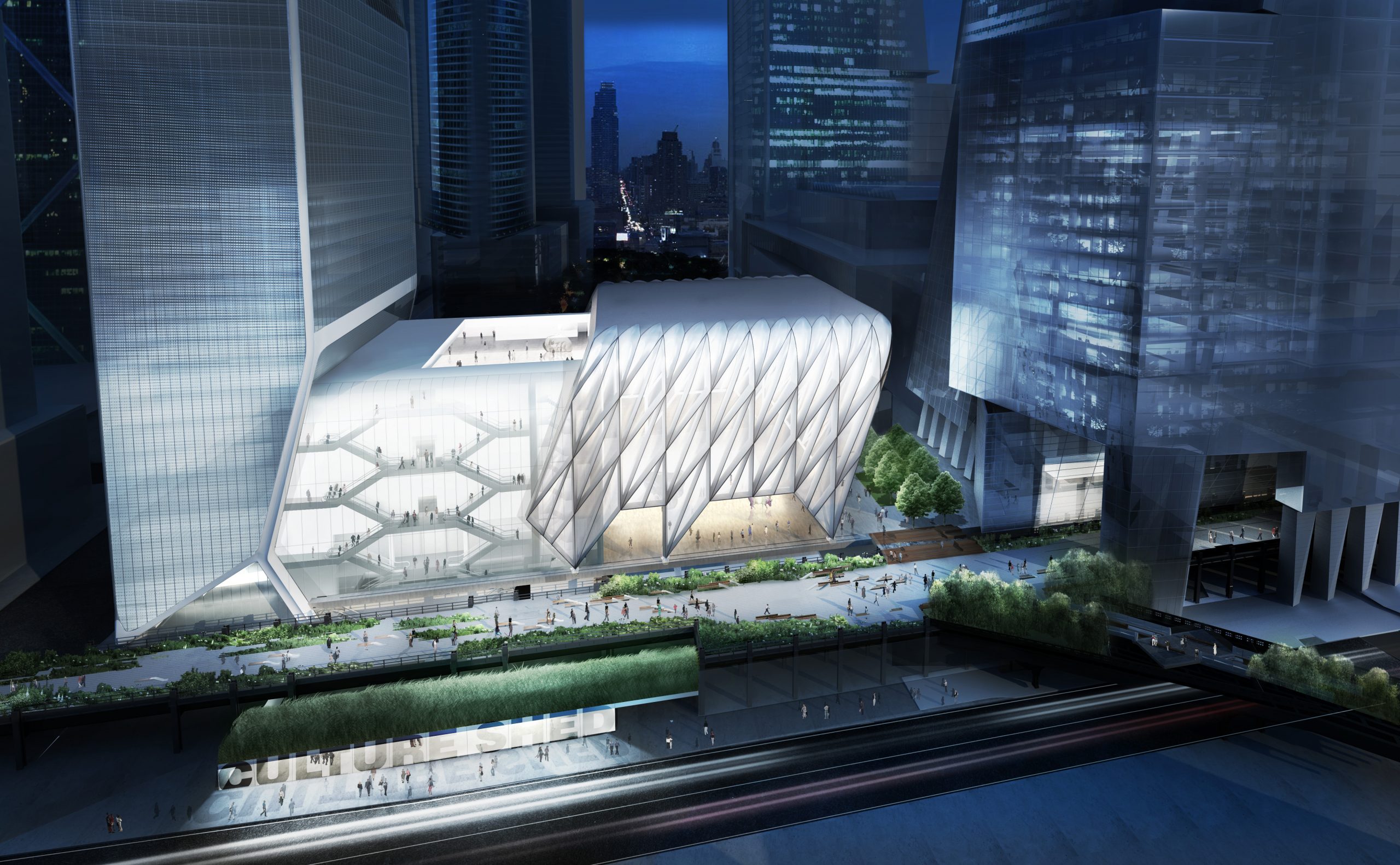There is no cut-and-dry way to plan for the success and vibrancy of any sector, but planning for the integration and success of arts and culture is a particularly tricky endeavor. This is in part due to the ambiguity of the term ‘culture,’ which has many different meanings depending on the context. For example, the Culture Shed, a $360 million project under construction at Hudson Yards, will become a venue for visual and performing arts, while the Crown Heights West Indian Day Parade is a decades old celebration of Caribbean culture, arts, and tradition. Both are discussed as cornerstones of New York City’s cultural landscape, yet both are dramatically different in their approach and audience. The various meanings associated with arts and culture make success difficult to define and measure. How do we define arts and culture within the urban planning profession, and how can they become tools for our work?

Culture Shed (Source: Wikipedia)
Arts and Culture’s value for Urban Planning
Arts and culture can illustrate issues that stimulate community building, economic development and neighborhood stabilization in productive and imaginative ways. Through these expressions, planners are sensitized and given contextual information to the issues and opportunities that their work must address. Planners are able to identify and connect with expressive and insightful community members that can augment the planning process for sustained community participation in projects. The creative drivers particular to a place- neighborhood businesses and anchoring cultural organizations- are critical for planning goals of stable and livable communities. By understanding and fostering local economies and culture producers, planners can stimulate broader civic engagement and collective efficacy that reinforce social connections and promote increased participation in decision-making.
Communication is a critical element for urban planning. It’s the process of sharing ideas and information, and promoting understanding among a group. Planners need to communicate development priorities and gather information from all stakeholders involved, but, at times, are restricted because of their own technical language, broader community development goals, or conflicting viewpoints within the local perspective. Arts and culture can be a tool to promote engagement and civic participation by using local assets of a community and forms of expression to develop relationships and promote awareness. From the expansion of affordable housing to solving public transit constraints, the New York City metropolitan region is undergoing profound changes, and arts and culture should be a mechanism to communicate critical information about city plans and to capture local information for improved development outcomes.

Chicago Cultural Plan (Source: Arts Alliance)
Following the lead of cities like Houston, Denver, and Chicago, the NYC Department of Cultural Affairs (DCLA) and City Council will release the first ever comprehensive city-wide cultural plan for New York City in July 2017. DCLA developed the plan to ensure affordable studio and living space for artists, and to allow New Yorkers easy access to city-supported cultural institutions. The success of the plan depends on DCLA engaging stakeholders that represent the depth and breadth of NYC’s cultural resources. Planners are well situated to assist the agency in selecting key community stakeholders, as well as suggest ways to ensure their input could add real value to this ambitious effort.
Expanding the Conversation
Despite all the rich areas for improvement and innovation, or perhaps because of it, planners are not harnessing the full potential of arts and culture in practice. The APA-NY Metro Chapter is an the ideal venue for advancing new ideas and conversations around arts and culture, and its relationship to planning. For this reason, we have teamed up with the Urban Design Committee to incubate an Arts & Culture subcommittee this spring. In the coming months we will release a survey to get a better sense of how (or if) members consider the arts in their work, identify pressing questions and related hot topics, and pinpoint an issue to discuss in depth at an event in fall 2016.
Get involved!
This conversation will not be meaningful without the valuable input from members. If you are interested in contributing to the development of an Arts & Culture Committee in the APA-NY Metro Chapter please get in touch with us: apa.arts.culture@gmail.com.
Vanessa Monique Smith, Caroline Bauer, and Naomi Hersson-Ringskog
have launched an Arts and Culture subcommittee for the American Planning Association, New York Metro Chapter. Caroline Bauer is Project Director at Curb Your Litter: Greenpoint; Vanessa Monique Smith is Director of Research and Outreach at 3×3 Design; Naomi Hersson-Ringskog is Co-Founder and Executive Director at No Longer Empty.



